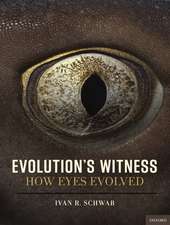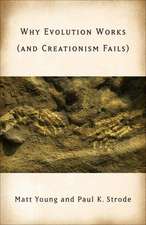Evolutionary Biology: Volume 22: Evolutionary Biology, cartea 22
Editat de Max K. Hecht, Bruce Wallace, Sir Ghillean T. Pranceen Limba Engleză Paperback – 8 oct 2011
Preț: 387.96 lei
Nou
Puncte Express: 582
Preț estimativ în valută:
74.23€ • 77.51$ • 61.30£
74.23€ • 77.51$ • 61.30£
Carte tipărită la comandă
Livrare economică 15-29 aprilie
Preluare comenzi: 021 569.72.76
Specificații
ISBN-13: 9781461282518
ISBN-10: 1461282519
Pagini: 308
Ilustrații: 306 p.
Dimensiuni: 152 x 229 x 16 mm
Greutate: 0.41 kg
Ediția:Softcover reprint of the original 1st ed. 1988
Editura: Springer Us
Colecția Springer
Seria Evolutionary Biology
Locul publicării:New York, NY, United States
ISBN-10: 1461282519
Pagini: 308
Ilustrații: 306 p.
Dimensiuni: 152 x 229 x 16 mm
Greutate: 0.41 kg
Ediția:Softcover reprint of the original 1st ed. 1988
Editura: Springer Us
Colecția Springer
Seria Evolutionary Biology
Locul publicării:New York, NY, United States
Public țintă
ResearchCuprins
1. Phylogeny of Early Vertebrate Skeletal Induction and Ossification Patterns.- Introduction: The Fossil Record.- The Vertebrate Skeleton.- The Products of Skeletogenesis.- The Problem of Ontogenetic Similarity.- The Phylogenetic Basis of Investigation.- Findings.- Discussion.- Conclusions.- Appendix: Characters Related to Vertebrate Skeletogenesis.- References.- 2. A Review of the Origin of Snakes.- The Paleontological Evidence and Early Theories of Snake Origins.- The Affinities of Snakes.- The Classification of Snakes: Basic Divisions.- The Ecology of Snake Origins.- References.- 3. Horses, the Fossil Record, and Evolution: A Current Perspective.- Fossil Horses and Evolutionary Thought.- Origin and Diversification of the Perissodactyla.- Synoptic History of Horses: The First 25 Million Years.- The Miocene: Acme of Horse Evolution.- The Last Eight Million Years of Horse Evolution.- Selected Evolutionary Principles.- Summary and Conclusions.- References.- 4. Historical Biogeography of the Drosophila melanogaster Species Subgroup.- Biogeographic and Ecological Evidence.- Unequivocal versus Equivocal Phylogenetic Relationships.- Paleobiogeographic Inferences.- Concluding Remarks and Summary.- References.- 5. Aposematism and Batesian Mimicry: Measuring Mimetic Advantage in Natural Habitats.- Some Background Information on Aposematism and Mimicry.- Studies with Captive Predators or at Feeding Stations in the Field.- Studies in Natural Habitats.- Discussion.- Future Research.- Summary.- References.- 6. Body Size, Ecological Constraints, and the Evolution of Life-History Strategies.- Body Size As a Central Feature in Life-History Patterns.- Patterns of Covariation in Life-History Traits, Body Size, and Ecological Background.- Body Size and Biotic Interactions.- Conclusion.-Summary.- References.





















